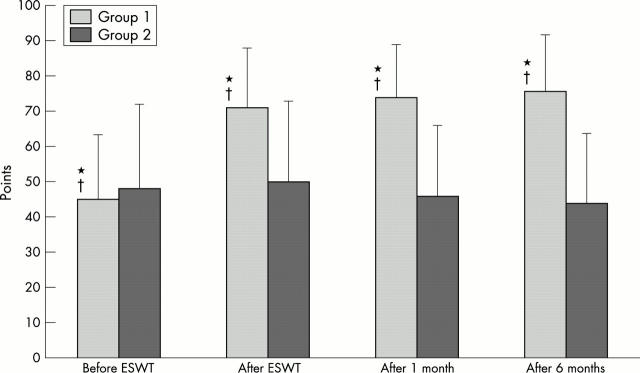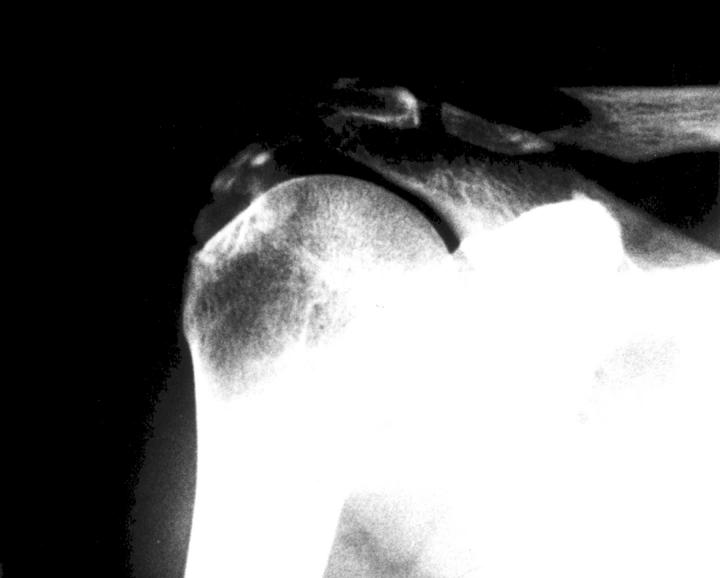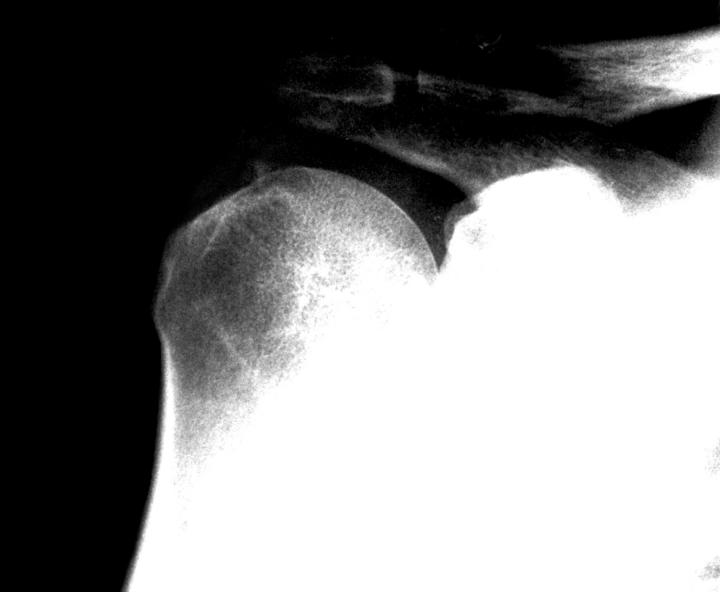Abstract
Methods: 70 patients showing chronic, symptomatic, calcifying tendinitis of the shoulder were examined. A single blind randomised study was performed with 35 patients undergoing a regular treatment (group 1) and 35 a simulated one (group 2). Pain and functional assessment was carried out according to Constant and Murley. Variations in the dimension of the calcification were evaluated by anteroposterior x ray films.
Results: A significant decrease of pain and a significant increase in shoulder function was seen in group 1. Examination by x ray showed partial resorption of the calcium deposits in 40% of cases and complete resorption in 31% of cases in group 1. In the control group no significant decrease of pain and no significant increase in shoulder function was seen. No modifications were observed by x ray examination.
Conclusion: Because of its good tolerance, safety, and clinical radiological response, ESWT can be considered as an alternative treatment for chronic calcific tendinitis of the shoulder.
Full Text
The Full Text of this article is available as a PDF (88.2 KB).
Figure 1.
Mean Constant score before extracorporeal shock wave treatment (ESWT), after ESWT, and one and six months later. *p<0.001, group 1 v group 2; †p<0.001 group 1, baseline v after ESWT, after one month, and after six months.
Figure 2.
Radiograph of the shoulder before ESWT.
Figure 3.
The same patient as in fig 2 one month after the end of the treatment.





